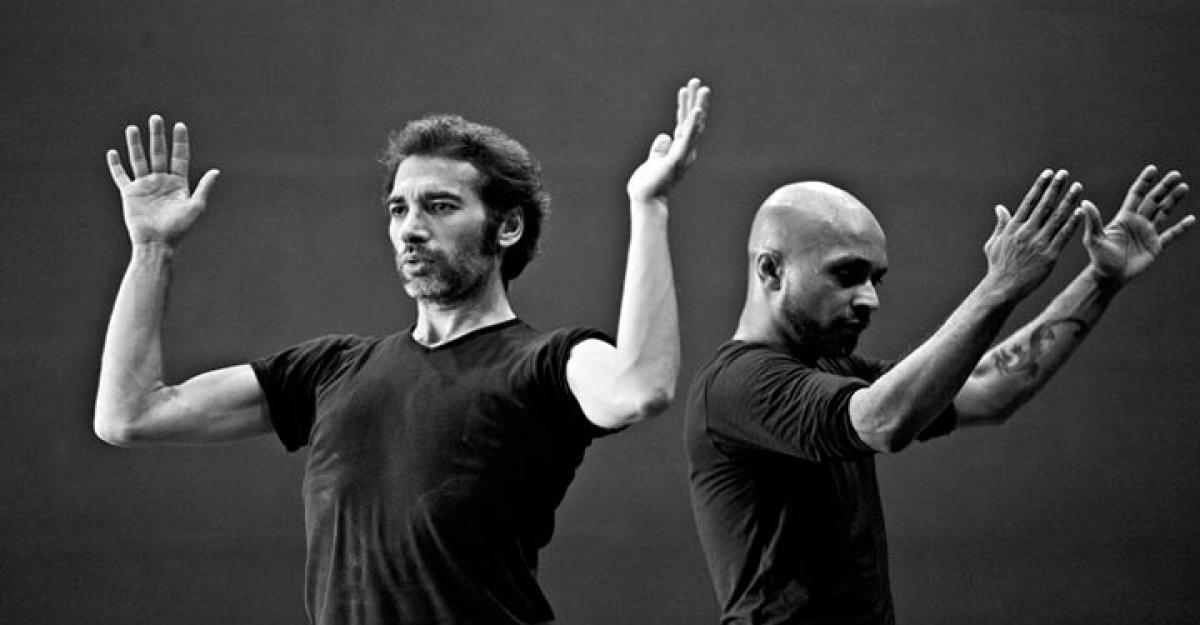Live
- Telangana Celebrates Bathukamma with Grandeur; Festivities Light Up Hyderabad's Tank Bund
- Latvia to ban cellphones in elementary schools
- MP: Bilkhiriya Kalan residents reap benefits of Jal Jeevan Mission scheme
- MP govt preparing training guide for growth of school children
- India bids tearful adieu to icon Ratan Tata, thousands join his final journey
- A fast-paced flick of the hunter and the hunted
- Prasanth Varma unleashes first female Indian superhero from PVCU 'Mahakali'
- Rana launches FL &title of 'Khel Khatam Darwajaa Bandh'
- RK films acquires Telugu rights of 'Jhansi IPS'
- 'The Great Pre Wedding Show' launched traditionally by Rana Daggubati
Just In

I was born in London in a family, where my grandfather had never allowed my mother to take up dancing which was her passion. I, on the other hand, failed in my exams and was always dreaming of icons like Michael Jackson, Bruce Lee and Charlie Chaplin;
.jpg)
Fulfilling his mother’s childhood dream, and taking on a contemporary style of Flamenco and Kathak dance form are high points of international artiste Akram Khan’s life
How did dance happen in your life?
I was born in London in a family, where my grandfather had never allowed my mother to take up dancing which was her passion. I, on the other hand, failed in my exams and was always dreaming of icons like Michael Jackson, Bruce Lee and Charlie Chaplin; I was thus literally fulfilling the dreams of my mother by studying folk dance from a young age and later started training in Kathak under Pratap Pawar who has been a disciple of the legend Pandit Birju Maharaj.
How did you feel about Kathak and Flamenco on one stage?
My Guru Pratap Pawar was one of the first artistes to have brought out the combination of Flamenco-Kathak in a contemporary module, about three decades ago. This was a very unique amalgamation of two styles, which could be yet found distinct at the very same time.
My Guru was a very important guide to me not only in the area of dance, but to help me understand my presence in United Kingdom. My exposure to world stage at the age of fourteen years, touring the world with Peter Brook’s ‘Mahabharata’ also added a new dimension to the Kathak-Flamenco mix on stage.
Can you tell us about ‘the thought of Lord Shiva and concept thereof’ in your piece ‘Torobaka’?
One can say that it all starts in the name itself. ‘Torobaka’ is a Maori-inspired phonetic poem by Tristan Tzara.‘Toro’ means bull and ‘baka’ means cow, both sacred animals in the world of tradition and culture. There are some chants which are accompanying the piece to bring in the tremendous energy that is unleashed by the Lord Nataraja, which is a dance of trance in the cosmos.
How important is music to all your productions?
Music and dance are an integration of the mind and soul. I learned music before joining kathak. After all, without a beat or a melody, it’s not possible to create a mood or an image of movement.
How different is the Akram Khan Company?
The productions of my company are designed to be thought-provocative, modern, competitive and global in nature. Times are changing and I feel that tradition has a strong role to play along with the contemporary forms, which bring in something very new to the viewer.
The traditional flavour is very much there, with a mix of modern element. One will always discover the traditional element on keen observation. I have studied Martha Graham, Merce Cunningham, Pina Bausch, Chandralekha and Kumudini Lakhia.
Our collaborators include top ballerina Sylvie Guillem, sculptor Anish Kapoor, writer Hanif Kureishi, composer Steve Reich, filmmaker Danny Boyle and singer Kylie Minogue. Choreography is about patterns. It could be from any form of art.
What do you feel about the young generation in the field?
Classical Indian dance forms need constant support and have a limited appeal in the vast younger generation. The subtle nuances and the highest form of joy in these performances takes time to reach out to the young minds that have still not faced the rigours of day-to-day life.
By:Jaywant Naidu

© 2024 Hyderabad Media House Limited/The Hans India. All rights reserved. Powered by hocalwire.com







